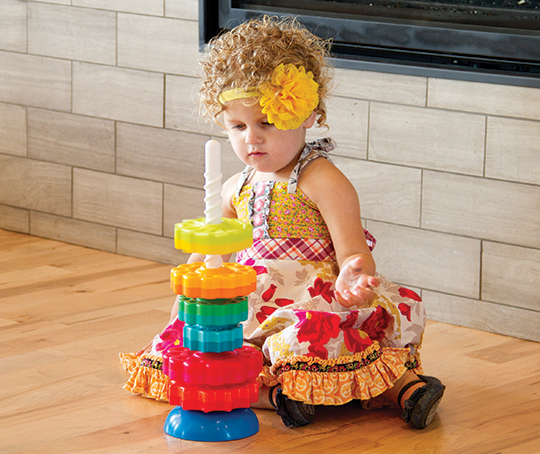
by Mark Carson, founder, Fat Brain Toys
Parents and experts are concerned about how much time kids spend looking at screens, as well as what the potential long-term effects might be. It has been thoroughly studied and debated in recent years, leading to continually changing guidelines on the appropriate amount of “screen time.” In case you’re wondering what the current guideline says: The American Academy of Pediatrics recommends no screen time for children under 18 months of age, and less than two hours per day of only educational programming for older children.
There’s a concern among many parents and grandparents that kids aren’t playing like they used to play. Children have been playing with toys for thousands of years, but as both toys and technology evolve, screen toys—and even some character-based toys—have begun to eat up more and more of the time kids spend playing, and it has left many worried that modern playing is missing one crucial component: play.
The Importance of Physical Play
Some parents want to give their children an academic leg-up by providing them with tech gadgets and electronic toys designed to teach ABC’s and reading and writing. However, doing so might actually be doing more harm than good, especially for younger children whose still-developing brains are more vulnerable to the negative effects of screen time.
Research has shown that kids are not able to learn from screen use without help from parents, and excessive use can even interrupt brain development, including the ability to play. Children need physical interaction to fully develop crucial cognitive skills. By negating the physical aspect of play, screen time effectively stunts that development process.
The Litmus Test for Character Toys
Simply taking away (or limiting, at the appropriate ages) screens isn’t going to be a cure-all for your child’s playtime experiences. There are still other pitfalls to look out for—namely, the recent rise in character and licensed toys. Parents should use caution before buying some of these toys because they don’t all lend themselves to authentic play.
This isn’t to say that these toys are inherently bad. There are plenty of great toys in this category. But, it can be difficult to weed out the bad from the good. Luckily there’s a litmus test you can use: Ask yourself whether that toy has any value outside of being associated with a character, movie, comic series, etc. If you remove that association, what qualities does the toy still have? Can your child or grandchild learn from it? Build with it? Does it promote creativity?
The problem with toys that fail this test are that children typically use them in a non-creative fashion. They watched the movie and they know the script of how the character behaves. Rather than using their imaginations to invent a completely new world or character, they’ll most likely just use these toys to reenact the plot of the film or show they represent.
Reversing the Decline of Play
It’s more important now than ever that we reverse the decline of play and move away from screen-focused, closed-ended playing. Take for instance this list of the hottest toys of 2017. The list is dominated by screens, apps, and character toys, leaving only the Arckit as a toy that will inspire real playing. It’s not an encouraging picture of the message we’re sending to kids about what it means to play.
Reversing this trend means we have to focus on the core values of playtime such as imagining, creating, building, engineering, problem solving, thinking, and physically engaging—and then look for toys that promote those skills. Look for open-ended play; play that keeps on giving, that offers endless opportunities to engage and re-engage instead of dying out with the fad or novelty.
It’s been said that toys are the tools of childhood, so let’s make sure we’re giving them the right tools.
Mark Carson is the president and co-founder of Fat Brain Toys, a Nebraska-based toy retailer and manufacturer. A self-taught developer, inventor and marketer, Mark, with his wife Karen, has built Fat Brain Toys into one of the nation’s largest independent toy retailers.
